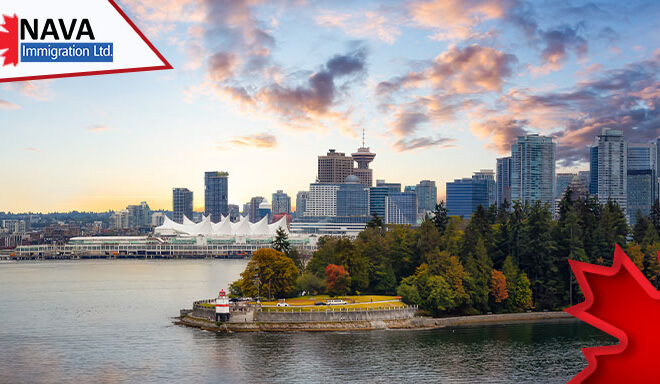Differences Between Express Entry & Provincial Nominee Programs
Understanding the differences between Express Entry & Provincial Nominee Programs is essential for navigating Canadian Immigration. While both pathways can lead to permanent residency, they have distinct processes as well as requirements.
There are multiple options to apply for Canadian permanent residency, and the only way to discover the best for you is by knowing about both programs.
So, without further ado, let us begin!
What Is Express Entry and Provincial Nominee Program?
Before understanding the differences between Express Entry & Provincial Nominee Programs, let us discuss what these two programs are.
Express Entry is a points-based Canadian immigration system designed to attract skilled workers in Canada. It covers different immigration programs and categories.
Candidates are ranked based on a CRS, i.e., Comprehensive Ranking System score, which evaluates factors such as age, education, work experience, and language proficiency. Those with the highest CRS scores are invited to apply for permanent residency, with most applications being processed within six months.
On the contrary, Provincial Nominee Programs are immigration pathways that allow Canadian provinces and territories to nominate individuals who want to immigrate to Canada and settle in a specific region. Every province and territory has its unique PNP, tailored to meet its economic and labor market needs. Candidates can apply for a provincial nomination through either a base or enhanced stream, with the latter linked to the Express Entry system. A provincial nomination significantly boosts an applicant’s CRS score, thus making it easier to obtain an invitation to apply for permanent residency.
Differences Between Express Entry and Provincial Nominee Programs
Below are the differences between Express Entry & Provincial Nominee Programs. Take a look!
| Express Entry | Provincial Nominee Program | |
| Government Jurisdiction | A federal system that manages applications for three national economic immigration programs and other annually selected categories. It applies to all of Canada. | Provincial or territorial immigration programs are designed to address specific regional labour market needs. Each province/territory manages its own program and sets its own criteria. |
| Purpose | Identifies and processes skilled immigrants with strong potential to contribute to the Canadian economy, thus aiming for a quick and efficient selection of high-scoring candidates. | Allows provinces and territories to nominate candidates who have skills, work experience, or qualifications that align with their local economic demands. |
| Application Process | Applicants submit an online profile, receive a Comprehensive Ranking System (CRS) score, and are ranked in the pool of candidates. | Applicants either apply directly to a province/territory or express interest in a specific PNP via their Express Entry profile. |
| Eligibility | Eligibility is based on federal criteria like education, age, work experience, and language proficiency. | Eligibility requirements are more varied, often specific to provincial needs, such as certain occupations, educational backgrounds, or work experiences. |
| Rounds Of Invitation | The federal government invites applicants to apply for permanent residency through regular invitation rounds, which are usually held every 2 weeks. | Provincial Nominee Program (PNP) rounds happen in two ways: applicants apply directly to a province’s PNP, or provinces search the Express Entry pool for eligible applicants meeting their labour needs. Direct applicants receive a nomination certificate, while Express Entry candidates gain 600 CRS points with a provincial nomination. |
| Processing Time | Federal applications are processed within six months on average. But this depends on the program. | Processing times vary based on the specific province/territory and nomination stream. |
Evaluating The Pros and Cons Of Express Entry and Provincial Nominee Program
Apart from understanding the differences between Express Entry & Provincial Nominee Programs, let us discuss their pros and cons.
Express Entry Advantages
- Faster Processing
One of the primary advantages of the Express Entry system is its efficiency in processing applications. Most applications are processed within six months, thus making it one of the quickest pathways to Canadian permanent residency.
- Broader Eligibility
Express Entry is specifically designed to attract skilled professionals from various backgrounds. It encompasses three federal immigration programs, i.e., the Federal Skilled Trades Program, the Federal Skilled Workers Program, and the Canadian Experience Class, offering a wide range of opportunities for applicants with diverse qualifications and work experiences.
Express Entry Disadvantages
- Highly Competitive
The Express Entry system is points-based and highly competitive. Applicants are ranked against one another using the Comprehensive Ranking System score, which considers factors like age, education, work experience, and language proficiency. Only those with the highest scores obtain invitations to apply for permanent residency.
- Reliant On CRS Score
A significant disadvantage is the heavy reliance on the CRS score. Even highly qualified applicants might find it challenging to secure an invitation if their CRS score is not competitive enough. This can be specifically difficult for older applicants or those who do not have high language test scores.
Provincial Nominee Program Advantages
- Opportunities For Lower CRS Scores
One major advantage of PNPs is that they provide opportunities for applicants with lower CRS scores to obtain a nomination. Provincial nominations add 600 points to the CRS score, virtually guaranteeing an invitation to apply for permanent residency through Express Entry.
- Regional Focus
PNPs are specifically designed to address the specific labor market and economic needs of provinces and territories. This regional focus enables applicants to settle in areas where their skills are in high demand, potentially leading to better job opportunities and integration into the local community.
Provincial Nominee Programs Disadvantages
- Longer Processing Times
Compared to Express Entry, PNP applications generally have longer processing times. The two-step process can take several months or even over a year to complete.
- Limited To Specific Provinces
PNPs are province-specific, implying applicants must be willing to work and live in the province that nominated them. This limitation can be a disadvantage for those who prefer flexibility in choosing where to settle in Canada. Moreover, moving to another province just after obtaining permanent residency might be viewed unfavorably by immigration authorities.
Conclusion
The Express Entry system as well as Provincial Nominee Programs (PNPs) offer unique pathways to Canadian permanent residency, catering to different profiles and needs. In addition, understanding their distinctions helps applicants align their immigration strategy with their goals.
Express Entry is ideal for individuals with high CRS scores seeking faster processing. On the other hand, PNPs provide opportunities for applicants with lower scores to achieve residency through provincial nominations.
Moreover, each route has its benefits and challenges, from competitiveness and flexibility to regional focus and processing times.
Also, choosing the right pathway requires evaluating personal qualifications, career goals, and settlement preferences to ensure the best chance for success.
If you seek information on how to begin your Canada immigration application process, you can talk to our NavaImmigration experts at 1800-918-8490. You can also drop us an email at [email protected].





